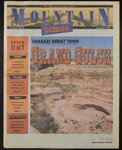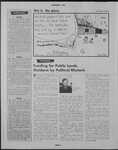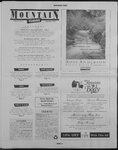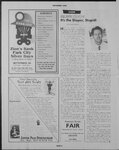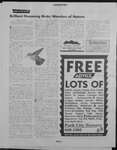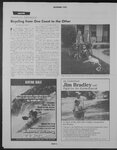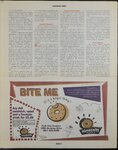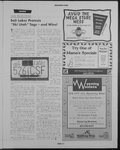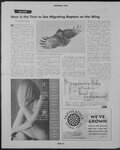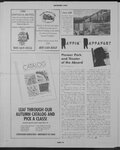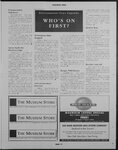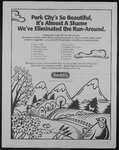| OCR Text |
Show SEPTEMBER Broa 1996 SHOOT IT OUT OVER STONE AGE GHOST TOWN By Mark Gerard COMPARED TO THE GRAND CANYON, GRAND GULCH is just a crease. Even with 600-foot high cliffs that corkscrew for sixty miles to the San Juan River, it’s like a wrinkle in the massively crumpled Colorado Plateau. But Grand Gulch is also a kind of wrinkle in the fabric of time. Sheltering cliffs, arid climate, and remote location created a time capsule here that delivered stone-age households — sandals, cradleboards, baskets and all — into our own era. Tucked beneath its rim is a prehistoric ghost town complete with parched tools that for centuries have awaited their owners’ return. On Cedar Mesa, south of Natural Bridges National Monument in southeastern Utah, Grand Gulch is more outdoor Anasazi than an museum Nowhere else can you see so many Anasazi granaries, rock art, and artifacts as they were abandoned. Hundreds of sandstone and mud buildings blend with the canyon walls so well that modern visitors overlook most of them. Together, the landscape and the artifacts weave a tale stretching over eleven centuries, from about 200 to 1300 A.D Then, as if some shaman cast a spell, the people vanished from Grand Gulch, leaving their possessions where they lay. For nearly 600 years, between the prehistoric Anasazi and the Mormon missionaries who settled briefly in Bluff in 1880, no one inhabited this # es It was wilderness country. by default — land considered worthless by whites who found no use in it for mining or grazing. “Ours has been the first, and will doubtless be the last party of whites to visit this profitless locality,” reported Lieutenant J.C. Ives after his 1858 Colorado Plateau expedition. Even for the modern visitor it is rough country. It is a crinkled lizard hide of jigsaw canyons and rock gullies, rust and tan stone with little vegetation. The popcorn-dry summer heat is grinding and the frequent virga — rain showers that evaporate midair — is a hardhearted tease. n 1893 it was a torturous three-day trip to Grand Gulch from Bluff for cowboy archaeologist Richard Wetherill. As late as 1965, the closest all-weather road was still thirty miles east near Blanding. Today, Bluff is just an hour away and about 12,000 hikers and packers descend annually on this North American Stonehenge. The time capsule of Grand Gulch — with many ancient artifacts still in place — is disintegrating like a sandcastle in the tide of modern visitors. Though most people come to see the cliff dwellings in the canyon i Re cane 4 = es, cultivated hefty spear maize, points and chipped to kill deer and sheep. Their ancestors may have pursued to extinction the big game mammals, such as mammoths and giant sloths, of the Pleistocene West over 10,000 years ago. These early Anasazi, known as Basketmakers for their artful weaving of yucca and willow, later farmed Grand Gulch canyon with its reliable of Natural History water supply, open floor, and longer growing season. The canyon cliff dwellings — almost certainly defensive by design — are remnants of the last phase of Anasazi culture. Built between 1100 and 1300 A.D., several thousand Anasazi may have lived in the area then. These later Anasazi, called Puebloans, made ceramic pots and Continued on page 9 of Grand Gulch, many more ancient dwellings and storage sites are on the surrounding plateau tops. These older pithouse ruins and sandstone storage cists nearly invisible to the are untrained eye. The earliest Anasazi, hunter-gatherers, lived on top of the mesas, They ate pricklypear, pine nuts, wild grass- “a a4 Photos by Laurel Casjens, courtesy Utah Museum = 4 Goldener Hirsch Inn, en joy quaking aspens light lunches wild flowers twilight dinners fragrant pines from our mountain PAGE 8 alpine deck SILVER LAKE VILLAGE IN UPPER DEER VALLEY 649-7770 Summer Hours Lunch Friday-Saturday 11:30-2:30 $18.95 Dinner “Mountain Times” Dinner Special 3-course dinner with beverage now through October Wednesday-Sunday 5:30-9:30 Sunday Brunch 11:00-3:00 |

